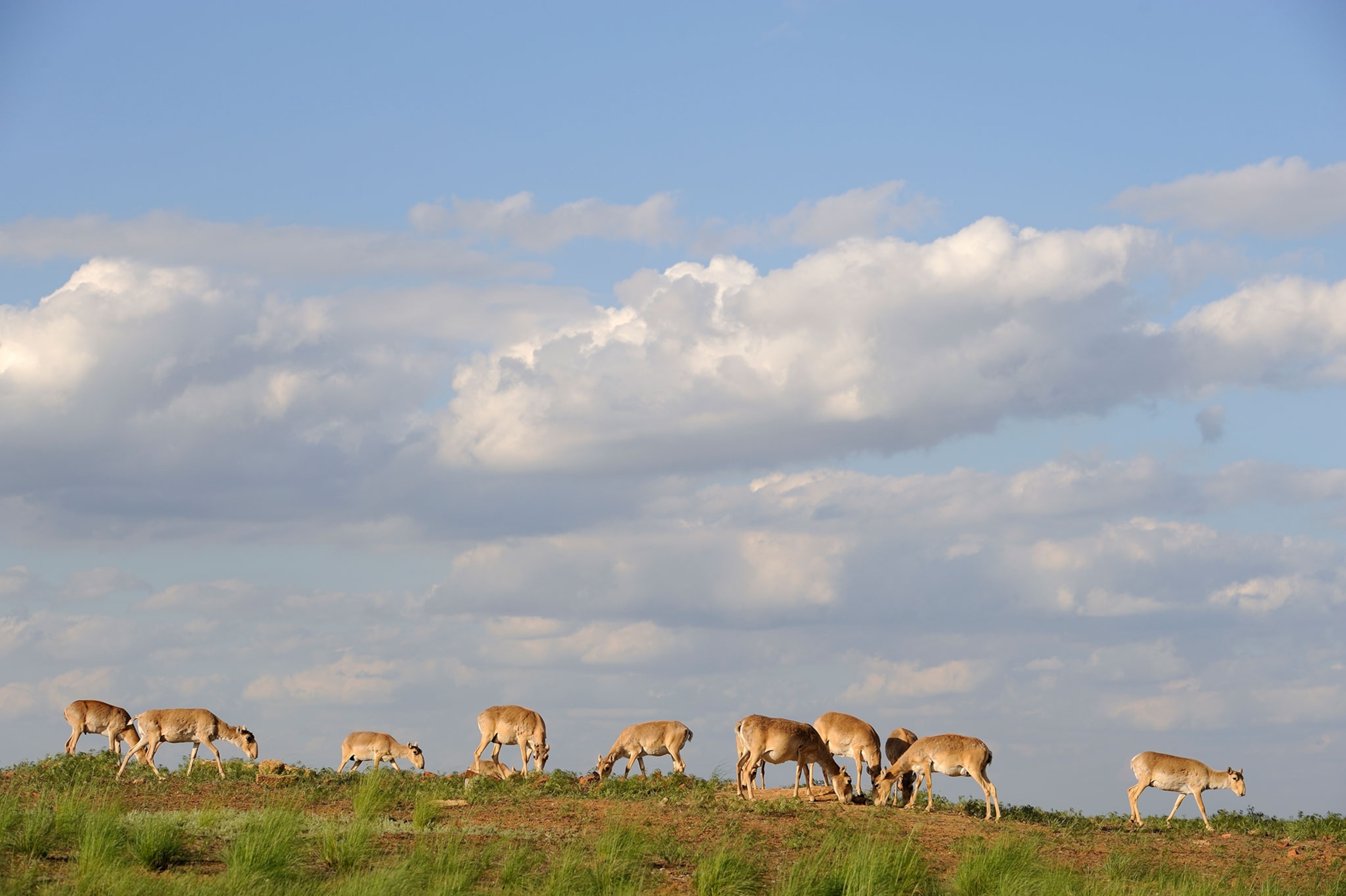200,000 Endangered Antelope Died. Now We Know Why.
Rare saiga antelope—known for their big noses—perished en masse in 2015 in Central Asia.
Conservationists have solved a mystery that has bedeviled them for serveral years: what caused the mass die-off of hundreds of thousands of critically endangered saiga antelope in Central Asia.
In the spring of 2015, a mysterious disease wiped out more than half of the species' remaining population on Earth. More than 200,000 saiga antelope perished during the mass die-off in Kazakhstan, the bodies of adults and calves dotting the grasslands for miles.
Often said to have a comical appearance, the goat-size antelope have a flexible, Gonzo-like proboscis that looks like a shortened elephant trunk. (Also see "5 Animals With Weird Noses.")
After careful study of animal remains from the die off, scientists have concuded the saiga were killed by hemorrhagic septicemia, or fatal blood poisoning, which was caused by Pasteurella multocida type B bacteria. This research was published in the journal Science Advances.
The scientists noted that the bacteria seem to be regularly present in the large noses of saiga, even perhaps at birth. But especially warm and humid conditions seemed to have allowed the bacteria to grow out of control, overwhelming the animals.
Roughly 100,000 saigas (Saiga tatarica tatarica) are thought to remain. They had declined sharply over recent decades due to hunting for their meat and horns and disruption of their habitat by human activities, particularly barriers to their migration from fences, roads, train tracks, and pipelines.
As to why they have such massive noses in the first place, research in 2004 suggested the large chambers inside the animal's proboscis may help “clean” air before it’s inhaled into the lungs. This would allow the animals to breathe more efficiently when traveling in great migrating herds, whose thundering hooves can turn the steppe into a dust storm.
There's also evidence that the the trunk aids in communication and choosing mates. As with male howler monkeys and koalas, loud nasal roars in male saiga are thought to advertise body size and help males woo females. The way the animals run, with their nose near the ground, scientists have joked that they look like vacuum cleaners of the steppe.
The longterm prognosis for the proboscis ones remains unclear. The species was once prevalent from the British Isles all the way to the Yukon in North America, but it is now restricted to a shrinking part of Central Asia.








